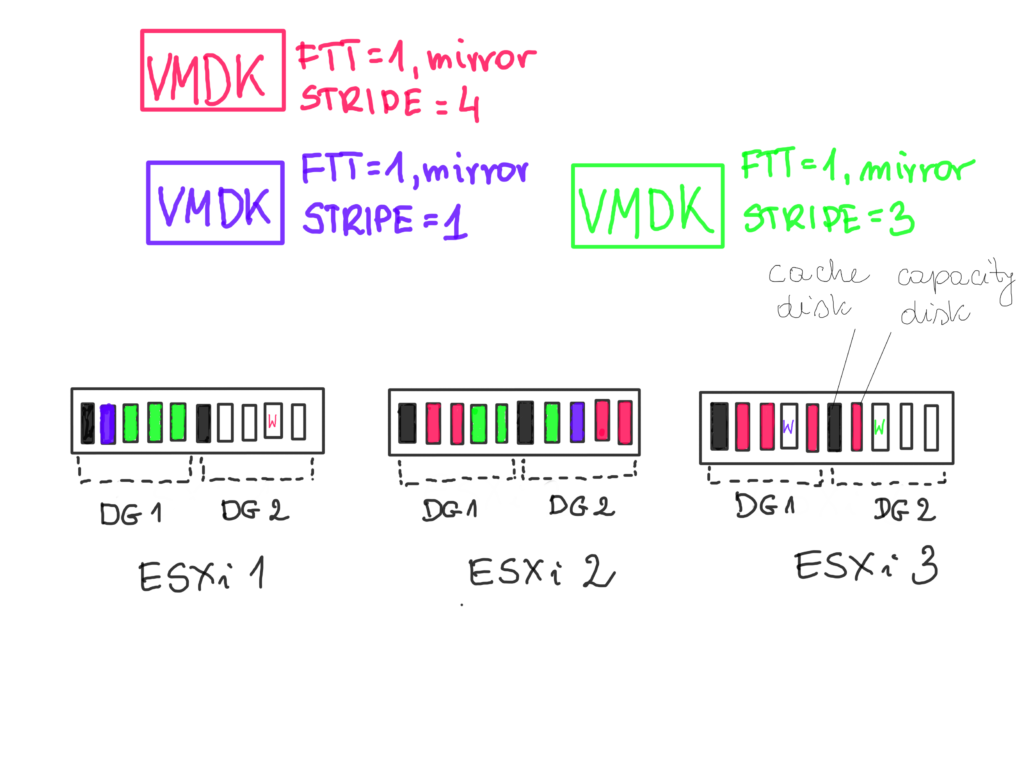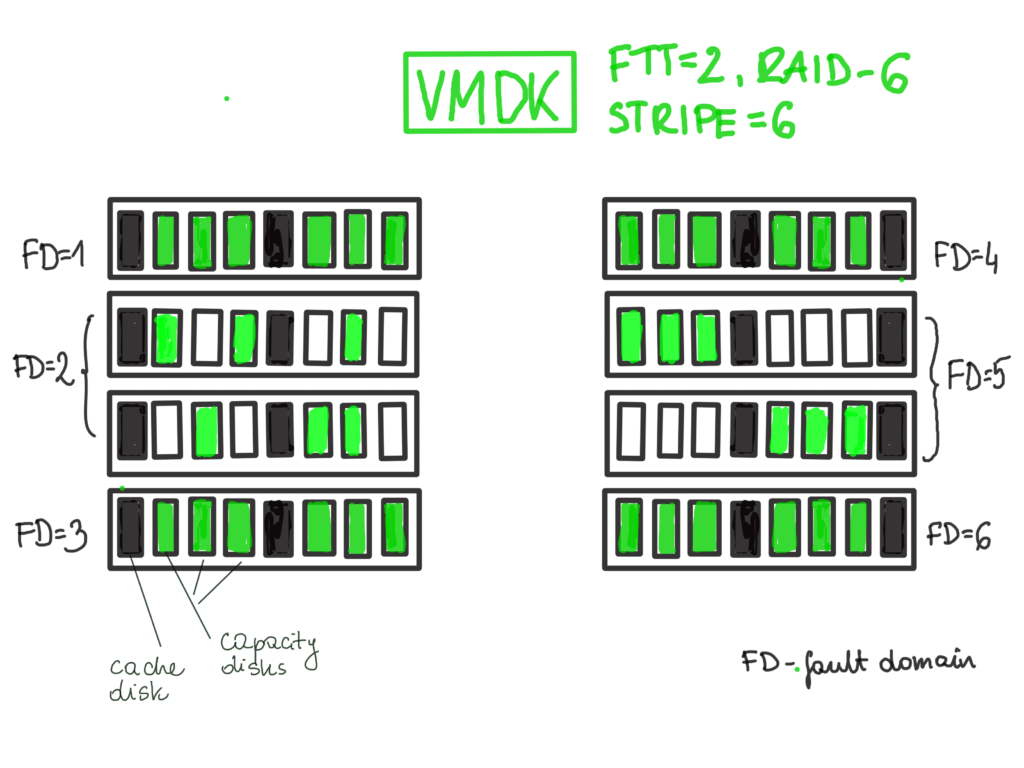Number of disk stripes per object is a vSAN SPBM policy that I don’t see implemented often. It’s probably because vSAN performs great and doesn’t need additional tuning in most cases.
Just in case you are running vSAN on hybrid cluster (it improves destaging from cache to capacity) or have a case for a particular VMDK that would benefit from the access to the IOPS available through a disk group or disk groups, you might want to check this SPBM.
Let’s see some examples for a simple 3-node cluster.
VMDK with STRIPE=1 will have two copies on two hosts and a witness metadata on a third host. I am assuming the disk is less than 255GB, if it is more than 255GB, vSAN will stripe the object for us anyway.
[by the way the default stripe >255GB differs from stripe defined by SPBM, because the components could sometimes be placed on the same disks and when it is controlled by SPBM, there are always different disks]
VMDK with STRIPE=3 will also have two copies on two hosts and a witness metadata on a third host. BUT the copies will reside on 3 disks instead on 1 disk. On ESXi 2 one part of the stripe is on disk group DG1 and the second part is on DG2 – so there is an extra boost because two disk caches are used for this replica.
VMDK with STRIPE=4 will again have two copies on two hosts and a witness metadata on a third host. BUT the copies will reside on 4 disks instead on 1 disk. On ESXi 2 and ESXi 3 one part of the stripe is on disk group DG1 and the second on DG2 – so again there is an extra boost because two disk caches are used for this replica.

vSAN will place the components of the object automatically for us, we don’t have to configure it. The only we configure is the number of disks we want to use the stripe on. We also need to have enough disks available for stripe to happen.
Remember, objects can be striped across disks within a disk group but also across different disk groups in the same or even a different hosts.
Now, let’s see a different example, this time we have more hosts and erasure coding. Stripe also works together for RAID-5 and RAID-6 polices.
In this example we have 8 hosts. VMDK uses RAID-6 policy (min. 6 hosts are required for this). Imagine we have just one VM with only one VMDK that uses this 8 hosts exclusively. With STRIPE=1 the components of VMDK would be placed on 6 hosts only and 2 hosts will be “empty”. STRIPE > 1 will increase the probability that components will also be placed on other hosts and more disks (cache and capacity) will be used for better disk utilization.
I marked hosts in the middle as FD=2 and FD=5 just to emphasize that they have components of the same object for this particular VMDK.

